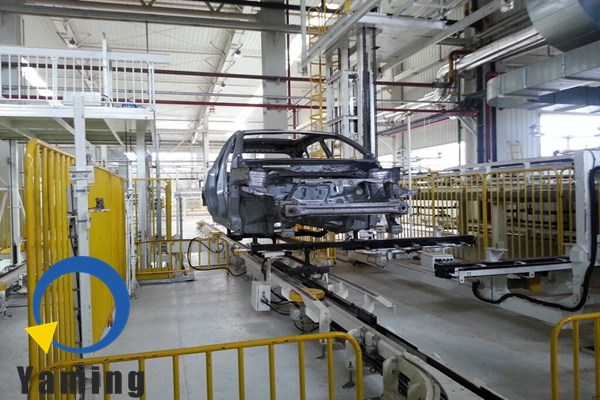A complete automotive automation assembly line is not a single device, but consists of multiple systems working together, each of which undertakes key production links:
1. Conveyor system: As the “vein” of automobile production lines, common ones include suspended conveyor chains, ground rolling conveyor lines, etc., which can be flexibly adjusted according to the size of the model and production rhythm. It can accurately transport key components such as body and chassis to various stations to ensure continuous and uninterrupted production processes. For example, in car production, the conveying system can achieve seamless transfer of the body in the three major workshops of welding, painting, and final assembly.
2. Automated operating system: This is the “executor” of the assembly line, with industrial robots as the core, covering welding robots, assembly robots, spraying robots, etc. Taking the welding link as an example, the robot can realize automated welding of body welds through high-precision sensor positioning. The error is controlled within 0.1mm, which is far better than the accuracy of manual welding. At the same time, 30-50 welds can be completed per hour, and efficiency is improved by 3-5 times.
3. Inspection and quality control system: It is equivalent to the “eyes” of the automobile conveying line, integrating vision inspection, laser measurement, pressure sensing and other technologies. After the final assembly is completed, the system will automatically detect the appearance of the car’s paint surface, component installation position, power system performance, etc., for example, the vision camera will capture the paint surface scratches, with an accuracy of 0.02mm. If a problem is found, an alarm will be triggered immediately to avoid unqualified products flow into the next loop.
4. Data management system: As the “brain” of the automobile automation assembly line, based on industrial Internet technology, it collects production data (such as equipment operating status, production progress, and product qualification rate) in real time, and optimizes production parameters through big data analysis. For example, when the operating speed of an assembly robot drops, the system will warn in advance and push maintenance plans to reduce equipment downtime and ensure that the overall efficiency (OEE) of the production line is stable at more than 85%.
